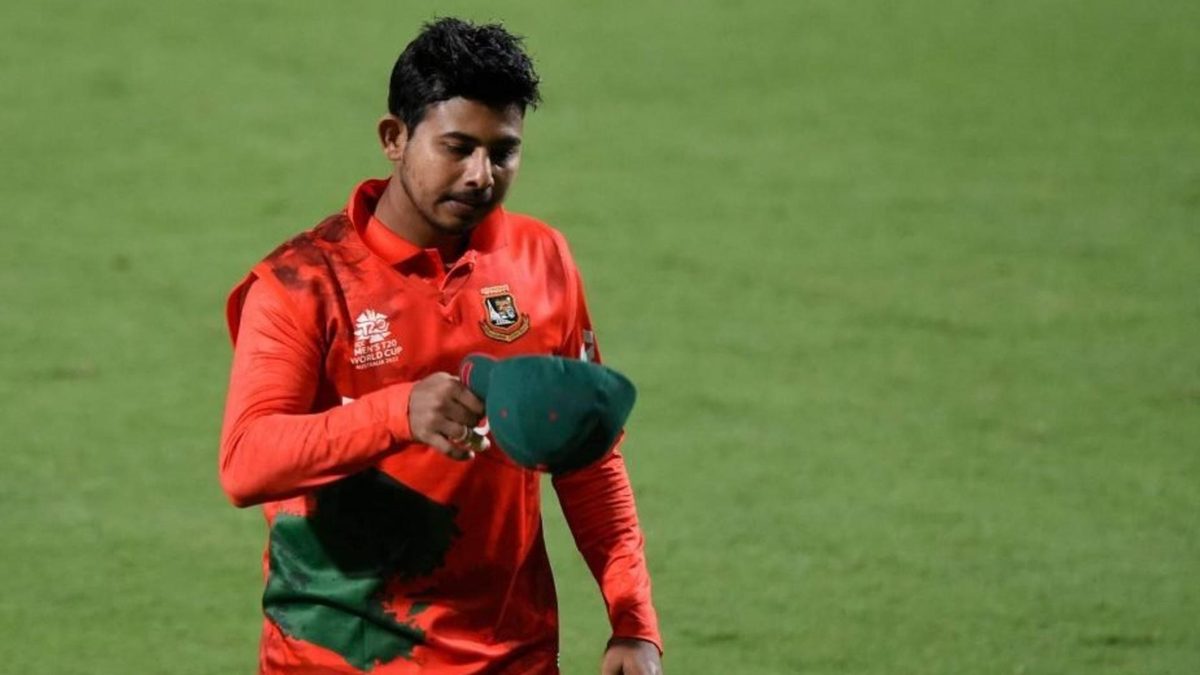
Bangladesh have been struggling. Big time.
In 2022, Bangladesh have won just four of their 16 T20Is, with their wins coming against the UAE, Afghanistan and Zimbabwe. In the 2021 World Cup Super 12, they lost against Scotland, then five out of five in the Super 12; in the 2022 Asia Cup it was two defeats in two matches; and in their tri-series against New Zealand and Pakistan that acted as a warm-up for this World Cup, they lost all four matches, and used a differing opening combination in each match. That’s a lot of losing. And a lot of uncertainty.
Furthermore, in Freddie Wilde’s CricViz analysis titled ”The Three Metrics That Will Define The World Cup”, the conclusion drawn was that Australia was “the land of pace, bounce and wrist spin.”
With the ball, Bangladesh rely heavily on finger spin, bowling more of it than anyone else. And with the bat, they have an “appalling” record against fast bowling, and a poor one against short-pitched balls. It all adds up to the uncomfortable conclusion that even though things have been bad in recent times for Bangladesh, they may still be about to get worse. They could not be less suited to Australian conditions if they tried.
Their squad, behind only the West Indies who made 12 changes heading into this year’s competition from last, is the most-changed with eight of the 15 members different from their outing in the UAE. The most notable changes include the absence of wicketkeeper Mushfiqur Rahim, who retired from the format in September, and last year’s captain Mahmudullah, who now finds himself surplus to requirements. Tamim Iqbal, who last played a T20I in 2020, also officially announced his retirement from T20s this year having already taken a break from the format in January 2021.
So what is there for Bangladesh to hang their hat on? For fans to pin their hopes on in the event that their team can pull off a string of upsets to rock the competition.
“There has been great progress by Bangladesh’s fast bowlers,” Test and ODI head coach Russell Domingo said to ESPNCricinfo. “They have developed into a really good bowling unit in the last two years. They will be dangerous [in the T20 World Cup]. If they can get good scores on the board, guys like Taskin [Ahmed], Ebadot [Hossain], Mustafiz [-ur Rahman] or Hasan Mahmud can put any batting line-up under pressure. The fast bowlers are going to be central for Bangladesh.”
Domingo’s belief in Bangladesh’s fast-bowling unit has been long-held. Two years ago, he publicly stated that he wanted Bangladesh to move away from their spin-only approach at home and he remains steadfast in backing his quicks: “Better fast bowing has definitely made our side more competitive when we go away from Bangladesh. In all formats. No doubt about that. But they are still a work in progress, a long way to go.”
Leading the attack in terms of out-and-out pace is Taskin. His numbers are modest (an average of 37.82 from 41 matches) but it is hoped that just as Bangladesh’s batters may struggle with the fast and bouncy conditions, it may also allow the likes of Taskin and teammates like Hasan Mahmud to fly.
Also crucial to any hope Bangladesh have is that their talismanic captain, all-rounder Shakib Al Hasan, has a tournament for the ages – as he did at the 2019 World Cup in England. He is their best batter, their most important spin-bowler, and along with Litton Das and Afif Hossain, the only batter to make a half-century in T20I cricket this year.
In the words of Bangladesh cricket correspondent Mohammad Isam, “Shakib is likely to bat at No.4 in the World Cup, giving him enough time to build his innings, attack or consolidate as the situation demands – and he can do both. He must be the bridge between a misfiring top order and a capable but off-colour middle order.”
The batting, in all, has been a struggle. In their warm-up against Afghanistan, Bangladesh managed just 98-9. In the four-match tri-series against Pakistan and New Zealand, only Das and Shakib averaged north of 20. Furthermore, the four opening partnerships tried out across the four games was a continuation of a run of uncertainty at the top where 12 different opening partnerships had been tried across 19 games.
Despite this, Bangladesh’s technical consultant S Sriram said following the tri-series that the management were “very clear” about the team they wanted to play heading into the World Cup.
“The captain, myself and the director are on the same page. We have two or three combinations in mind. Given the conditions, we will adopt accordingly”, he told the press following their final game against Pakistan.
Pace bowling and Shakib aside, however, there is little to suggest a successful tournament lies ahead for Bangladesh. But as the old saying goes, a wounded tiger is the most dangerous.








